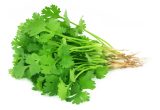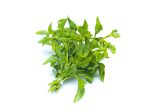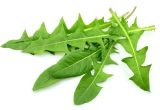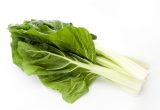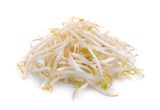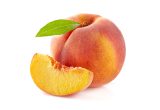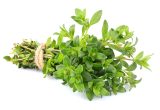Radish

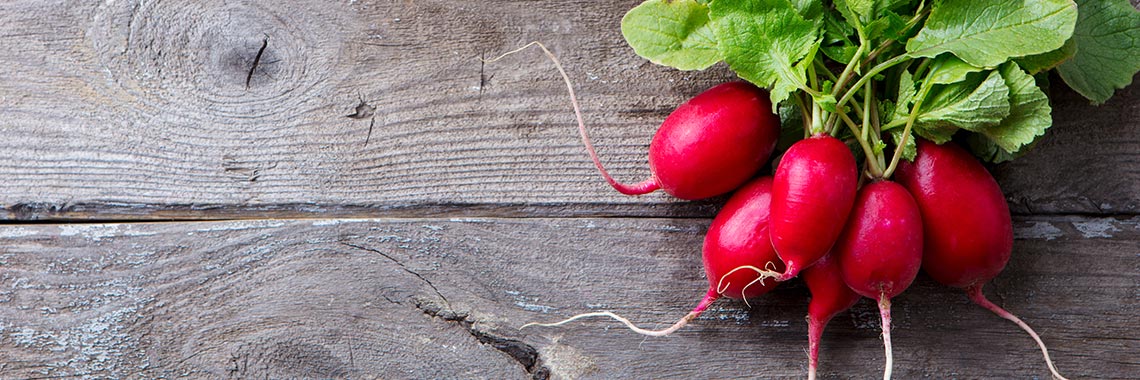
Description
- The red radish (Raphanus sativus) belongs to the Brassicaceae family.
- The roots are the most commonly used parts, but the leaves and fruits can also be consumed (Sharma, 2014).
- Radish is a crop found all over the world (Wang, 2013) and is important in Asian countries, especially in China, Japan and Korea (Park, 2011).
PHYSICAL AND ORGANOLEPTIC CHARACTERISTICS
- The anthocyanidins present in red and pink radish varieties are pelargonidin and delphinidin (Hanlon, 2011).
- Glucosinolates, as well as their derivatives, isothiocyanates, have a very important influence on the flavour and taste of radish (Wang, 2013). Isothiocyanates are characteristic compounds of the pungent taste of vegetables of the Brassicaceae family (Ramirez, 2020).
- The younger the radish, the less pungent it is (Fondation Louis Bonduelle, 2020).
- Radishes are firm when unripe, but with time they become less juicy, crisp and more elastic. These textural changes are due to changes in the cell walls such as increased xylan and lignin content, and altered pectin structure (Schäfer, 2016).
COMPOSITION CHARACTERISTICS (excluding macronutrients, vitamins and minerals)
- Radish sprouts contain significant concentrations of glucosinolates, isothiocyanates and phenolic compounds, as does radish root, but in higher proportions (Sharma, 2014). Among the glucosinolates present in radish, the 4 main ones are dehydroerucine (present in majority), glucoraphenin, glucobrassicin and glucoerucine (Gao, 2014).
- Glucosinates and isothiocyanates are believed to have an anticarcinogenic effect (Soundararajan, 2018).
- Radish contains flavonoids (flavanones, flavanols, and anthocyanins) and phenolic acids, giving it antioxidant and protective activity (Ahn, 2018; Luo, 2018; Manivannan, 2019).
- The polyphenols identified in radish are catechin, present mostly in its root (Beevi, 2012), (-)-epicatechin and ferulic acid (Park, 2011).
- Sixteen anthocyanins were also found, some of which were present in acetylated form with coumaroyl, malonoyl, feruoyl and caffeoyl fractions (Park, 2011).
RAW
The following values are approximate and depend on variety, season, ripeness, cultivation conditions, etc. The red radish is low in energy*. It provides an average of 14.50 calories (kcal) per 100 g, i.e. 60.70 kJ. A radish weighs between 5 and 10 g, which represents an energy intake of 0.72 to 1.45 calories (kcal).
COMPOSITION TABLES
For each nutrient, the tables provide information on the content, the minimum and maximum values, as well as the percentage of the Dietary Reference Values (DRVs) for 100 g net of red radish.
* Regulation (EC) No 1924/2006 of the European Parliament and of the Council of 20 December 2006 on nutrition and health claims made on foods.
MACRONUTRIENTS
| Constituent (g) | Average content |
Min-Max per 100g |
DRV% |
|---|---|---|---|
| Water | 95,50 | 93,10 - 97 | - |
| Fibers | 1,40 | 0,70 - 2,70 | - |
| Carbohydrates | 1,53 | 1,20 - NC | 0,59 |
| Sugars | 1,20 | NC - 1,86 | 1,33 |
| Lipids | < 0,50 | 0,07 - NC | - |
| Saturated fat | < 0,01 | NC - 0,032 | - |
| Protein | 0,94 | 0,30 - 1,51 | 1,88 |
| Constituent (g) | Amount | Min-Max | DRV% |
|---|---|---|---|
| Water | Ciqual 2020 (valeur issue des analyses Ciqual-Aprifel 2017) | - | - |
| Fibers | Ciqual 2020 (valeur issue des analyses Ciqual-Aprifel 2017) | - | - |
| Carbohydrates | Ciqual 2020 (valeur issue des analyses Ciqual-Aprifel 2017) | - | Règlement (UE) N°1169/2011 du parlement Européen, et du conseil du 25 octobre 2011 |
| Sugars | Ciqual 2020 (valeur issue des analyses Ciqual-Aprifel 2017) | - | Règlement (UE) N°1169/2011 du parlement Européen, et du conseil du 25 octobre 2011 |
| Lipids | Ciqual 2020 (valeur issue des analyses Ciqual-Aprifel 2017) | - | Règlement (UE) N°1169/2011 du parlement Européen, et du conseil du 25 octobre 2011 |
| Saturated fat | Ciqual 2020 (valeur issue des analyses Ciqual-Aprifel 2017) | - | Règlement (UE) N°1169/2011 du parlement Européen, et du conseil du 25 octobre 2011 |
| Protein | Ciqual 2020 | - | Règlement (UE) N°1169/2011 du parlement Européen, et du conseil du 25 octobre 2011 |
Zoom on carbohydrates
- Red radish contains 1.53 g of carbohydrates per 100 g.
- This is lower than the average amount of carbohydrates in raw vegetables: about 4.45 g per 100 g.
- These include glucose (0.70 g per 100 g) and fructose (0.40 g per 100 g).
- Red radish contains 1.20 g of sugars per 100 g, so it is low in sugar (less than 5 g per 100 g).
Zoom on fibres
- Red radish contains 1.40 g of fibre per 100 g.
- This amount is below the average quantity found in raw vegetables (2.43 g per 100 g).
Zoom on proteins
- Its protein content (0.94 g per 100 g) is lower than the average amount found in raw vegetables (1.87 g per 100 g).
Zoom on lipids
- Red radish is fat-free* since it contains less than 0.50 g of fat per 100 g.
* Regulation (EC) No 1924/2006 of the European Parliament and of the Council of 20 December 2006 on nutrition and health claims made on foods.
MINERALS AND TRACE ELEMENTS
| Constituent | Average content |
Min-Max per 100g |
DRV% |
|---|---|---|---|
| Calcium (mg) | 15 | 14,80 - 54,20 | 1,88 |
| Chloride (mg) | 32,19 | NC - 61 | 4,02 |
| Copper (mg) | < 0,01 | NC - 0,22 | - |
| Iron (mg) | 0,40 | 0,13 - 1,13 | 2,86 |
| Iodine (µg) | < 20 | 0,85 - NC | - |
| Magnesium (mg) | 6,20 | 6,10 - 16,80 | 1,65 |
| Manganese (mg) | 0,04 | 0,029 - 0,32 | 2 |
| Phosphorus (mg) | 20 | 12 - 34 | 2,86 |
| Potassium (mg) | 250 | 177 - 414 | 12,50 |
| Selenium (µg) | < 20 | 0,10 - NC | - |
| Sodium (mg) | 16 | 7,72 - 66 | - |
| Zinc (mg) | 0,08 | NC - 1,81 | 0,80 |
| Constituent | Amount | Min-Max | DRV% |
|---|---|---|---|
| Calcium (mg) | Ciqual 2020 (valeur issue des analyses Ciqual-Aprifel 2017) | - | Règlement (UE) N°1169/2011 du parlement Européen, et du conseil du 25 octobre 2011 |
| Chloride (mg) | Ciqual 2020 (valeur issue des analyses Ciqual-Aprifel 2017) | - | Règlement (UE) N°1169/2011 du parlement Européen, et du conseil du 25 octobre 2011 |
| Copper (mg) | Ciqual 2020 (valeur issue des analyses Ciqual-Aprifel 2017) | - | Règlement (UE) N°1169/2011 du parlement Européen, et du conseil du 25 octobre 2011 |
| Iron (mg) | Ciqual 2020 (valeur issue des analyses Ciqual-Aprifel 2017) | - | Règlement (UE) N°1169/2011 du parlement Européen, et du conseil du 25 octobre 2011 |
| Iodine (µg) | Ciqual 2020 (valeur issue des analyses Ciqual-Aprifel 2017) | - | Règlement (UE) N°1169/2011 du parlement Européen, et du conseil du 25 octobre 2011 |
| Magnesium (mg) | Ciqual 2020 (valeur issue des analyses Ciqual-Aprifel 2017) | - | Règlement (UE) N°1169/2011 du parlement Européen, et du conseil du 25 octobre 2011 |
| Manganese (mg) | Ciqual 2020 (valeur issue des analyses Ciqual-Aprifel 2017) | - | Règlement (UE) N°1169/2011 du parlement Européen, et du conseil du 25 octobre 2011 |
| Phosphorus (mg) | Ciqual 2020 (valeur issue des analyses Ciqual-Aprifel 2017) | - | Règlement (UE) N°1169/2011 du parlement Européen, et du conseil du 25 octobre 2011 |
| Potassium (mg) | Ciqual 2020 (valeur issue des analyses Ciqual-Aprifel 2017) | - | Règlement (UE) N°1169/2011 du parlement Européen, et du conseil du 25 octobre 2011 |
| Selenium (µg) | Ciqual 2020 (valeur issue des analyses Ciqual-Aprifel 2017) | - | Règlement (UE) N°1169/2011 du parlement Européen, et du conseil du 25 octobre 2011 |
| Sodium (mg) | Ciqual 2020 (valeur issue des analyses Ciqual-Aprifel 2017) | - | - |
| Zinc (mg) | Ciqual 2020 (valeur issue des analyses Ciqual-Aprifel 2017) | - | Règlement (UE) N°1169/2011 du parlement Européen, et du conseil du 25 octobre 2011 |
Zoom on minerals and trace elements
- Red radish contains a significant amount of potassium. It provides the equivalent of 12.50% of DRVs, i.e. 250 mg per 100 g.
- The amount of other minerals and trace elements is less than 5% of DRVs.
VITAMINS
| Constituent | Average content |
Min-Max per 100g |
DRV% |
|---|---|---|---|
| Provitamin A Beta-carotene (µg) | < 5 | 1 - 10 | - |
| Vitamin A equivalent (µg) | < 0,83 | 0,17 - 1,67 | - |
| Vitamin B1 (mg) | < 0,015 | 0,003 - 0,03 | - |
| Vitamin B2 (mg) | < 0,01 | NC - 0,053 | - |
| Vitamin B3 (mg) | < 0,10 | NC - 0,35 | - |
| Vitamin B5 (mg) | 0,09 | 0,07 - 0,98 | 1,50 |
| Vitamin B6 (mg) | 0,063 | 0,045 - 0,19 | 4,50 |
| Vitamin B9 (µg) | 95,4 | 7 - NC | 47,70 |
| Vitamin C (mg) | 12,20 | 3,80 - 50 | 15,25 |
| Vitamin E (mg) | < 0,08 | 0 - NC | - |
| Vitamin K1 (µg) | < 0,80 | 0,50 - 3,10 | - |
| Constituent | Amount | Min-Max | DRV% |
|---|---|---|---|
| Provitamin A Beta-carotene (µg) | Ciqual 2020 (valeur issue des analyses Ciqual-Aprifel 2017) | - | - |
| Vitamin A equivalent (µg) | Calcul à partir de la valeur Provitamine A Béta-carotène* | - | Règlement (UE) N°1169/2011 du parlement Européen, et du conseil du 25 octobre 2011 |
| Vitamin B1 (mg) | Ciqual 2020 (valeur issue des analyses Ciqual-Aprifel 2017) | - | Règlement (UE) N°1169/2011 du parlement Européen, et du conseil du 25 octobre 2011 |
| Vitamin B2 (mg) | Ciqual 2020 (valeur issue des analyses Ciqual-Aprifel 2017) | - | Règlement (UE) N°1169/2011 du parlement Européen, et du conseil du 25 octobre 2011 |
| Vitamin B3 (mg) | Ciqual 2020 (valeur issue des analyses Ciqual-Aprifel 2017) | - | Règlement (UE) N°1169/2011 du parlement Européen, et du conseil du 25 octobre 2011 |
| Vitamin B5 (mg) | Ciqual 2020 (valeur issue des analyses Ciqual-Aprifel 2017) | - | Règlement (UE) N°1169/2011 du parlement Européen, et du conseil du 25 octobre 2011 |
| Vitamin B6 (mg) | Ciqual 2020 (valeur issue des analyses Ciqual-Aprifel 2017) | - | Règlement (UE) N°1169/2011 du parlement Européen, et du conseil du 25 octobre 2011 |
| Vitamin B9 (µg) | Ciqual 2020 (valeur issue des analyses Ciqual-Aprifel 2017) | - | Règlement (UE) N°1169/2011 du parlement Européen, et du conseil du 25 octobre 2011 |
| Vitamin C (mg) | Ciqual 2020 (valeur issue des analyses Ciqual-Aprifel 2017) | - | Règlement (UE) N°1169/2011 du parlement Européen, et du conseil du 25 octobre 2011 |
| Vitamin E (mg) | Ciqual 2020 (valeur issue des analyses Ciqual-Aprifel 2017) | - | Règlement (UE) N°1169/2011 du parlement Européen, et du conseil du 25 octobre 2011 |
| Vitamin K1 (µg) | Ciqual 2020 (valeur issue des analyses Ciqual-Aprifel 2017) | - | Règlement (UE) N°1169/2011 du parlement Européen, et du conseil du 25 octobre 2011 |
Zoom on vitamins
- Red radish is high in vitamin B9* as it brings the equivalent of 47.70% of DRVs, i.e. 95.40 µg per 100 g.
- It is also a source of vitamin C* as it provides the equivalent of 15.25% of DRVs, i.e. 12.20 mg per 100 g.
- The quantity of other vitamins represents less than 5% of DRVs.
Calculation made: Beta Carotene / 6 + retinol
*Regulation (EC) No 1924/2006 of the European Parliament and of the Council of 20 December 2006 on nutrition and health claims made on foods.
POLYPHENOLS
| Constituent (mg) | Average content |
Min-Max per 100mg |
|---|---|---|
| Flavonoids (mg) | 0,63 | 0,39 - 1,05 |
| of which Flavonols (mg) | 0,63 | 0,39 - 1,05 |
| Lignanes (mg) | 0,044 | 0,01 - 0,10 |
| Total polyphenols | 0,67 | 0,40 - 1,15 |
| Constituent (mg) | Amount | Min-Max |
|---|---|---|
| Flavonoids | Phénol-Explorer version 3.6- Méthode utilisée : Chromatographie après hydrolyse | - |
| of which Flavonols | Phénol-Explorer version 3.6- Méthode utilisée : Chromatographie après hydrolyse | - |
| Lignanes | Phénol-Explorer version 3.6- Méthode utilisée : Chromatographie après hydrolyse | - |
| Total polyphenols | Phénol-Explorer version 3.6- Méthode utilisée : Chromatographie après hydrolyse | - |
Zoom on polyphenols
- Polyphenols are substances with an antioxidant effect.
- Flavonols, a subgroup of flavonoids, are present in the majority of red radish composites. They represent 93.44% of total polyphenols.
- Lignans account for the remaining 6.56%.
Nutrition and health claims
According to the definitions of nutrition claims as presented in Regulation (EC) No 1924/2006 on nutrition and health claims, and in view of the composition of red radish, the following claims may be used:
NUTRITION CLAIMS OF RED RADISH
- Low in energy (100 g of red radish provide less than 40 kcal)
- Low in sugar (100 g of red radish contain less than 5 g of sugar)
- Fat-free (100 g of red radish contain less than 0.5 g of fat)
- High in vitamin B9 (100 g of red radish provide more than 30% of DRVs)
- Source of vitamin C (100 g of red radish provide more than 15% of DRVs)
HEALTH CLAIMS (for a consumption of 100 g of red radish)
Folates or vitamin B9
- Folates contribute to:
- maternal tissue growth during pregnancy,
- normal amino acid synthesis,
- normal blood formation,
- normal homocysteine metabolism,
- normal psychological function,
- normal function of the immune system,
- reduction of tiredness and fatigue.
- Folates have a role in the process of cell division.
Vitamin C
- Vitamin C contributes to:
- normal function of the immune system during and after intense physical exercise,
- normal collagen formation for the normal function of blood vessels,
- normal collagen formation for the normal function of bones,
- normal collagen formation for the normal function of cartilage,
- normal collagen formation for the normal function of gums,
- normal collagen formation for the normal function of skin,
- normal collagen formation for the normal function of teeth,
- normal energy-yielding metabolism,
- normal functioning of the nervous system,
- normal psychological function,
- normal function of the immune system,
- protection of cells from oxidative stress,
- reduction of tiredness and fatigue,
- regeneration of the reduced form of vitamin E.
- Vitamin C increases iron absorption.
References
- Agence nationale de sécurité sanitaire de l’alimentation, de l’environnement et du travail. Table de composition nutritionnelle des aliments Ciqual 2020. Consultée le 10/09/2020 depuis le site internet Ciqual https://ciqual.anses.fr/
- Ahn, M., Kim, J., Hong, S., Kim, J., Ko, H., Lee, N.-H., … Shin, T. Black Radish (Raphanus sativus L. var. niger) Extract Mediates Its Hepatoprotective Effect on Carbon Tetrachloride-Induced Hepatic Injury by Attenuating Oxidative Stress. Journal of Medicinal Food. 2018; 21 (9): 1–10.
- Beevi SS, Mangamoori LN, Gowda BB. Polyphenolics profile and antioxidant properties of Raphanus sativus L. Nat Prod Res. 2012;26(6):557-63.
- Fondation Louis Bonduelle. Le radis noir. [En ligne] [Consulté le 02 avril 2020] Disponible à l’adresse : http://www.fondation-louisbonduelle.org/legume/radis/
- Gao R, Jing P, Ruan S, Zhang Y, Zhao S, Cai Z, Qian B. Removal of off-flavours from radish (Raphanus sativus L.) anthocyanin-rich pigments using chitosan and its mechanism(s). Food Chem. 2014;146:423-8.
- Hanlon PR, Barnes DM. Phytochemical composition and biological activity of 8 varieties of radish (Raphanus sativus L.) sprouts and mature taproots. J Food Sci. 2011;76(1):185-92.
- Luo X, Zhang H, Duan Y, Chen G. Protective effects of radish (Raphanus sativus L.) leaves extract against hydrogen peroxide-induced oxidative damage in human fetal lung fibroblast (MRC-5) cells. Biomed Pharmacother. 2018;103:406-414
- Manivannan, A., Kim, J.-H., Kim, D.-S., Lee, E.-S., & Lee, H.-E. Deciphering the Nutraceutical Potential of Raphanus sativus—A Comprehensive Overview. Nutrients. 2019 ;11(2) : 402.
- Neveu V, Perez-Jiménez J, Vos F, Crespy V, du Chaffaut L, Mennen L, Knox C, Eisner R, Cruz J, Wishart D, Scalbert A. (2010) Phenol-Explorer: an online comprehensive database on polyphenol contents in foods. Database, doi: 10.1093/database/bap024. Full text (free access)
- Park NI, Xu H, Li X, Jang IH, Park S, Ahn GH, Lim YP, Kim SJ, Park SU. Anthocyanin accumulation and expression of anthocyanin biosynthetic genes in radish (Raphanus sativus). J Agric Food Chem. 2011;59(11):6034-9.
- Ramirez D, Abellán-Victorio A, Beretta V, Camargo A, Moreno DA. Functional Ingredients From Brassicaceae Species: Overview and Perspectives. Int J Mol Sci. 2020;21(6).
- Règlement (CE) N° 1924/2006 du Parlement européen et du Conseil du 20 décembre 2006 concernant les allégations nutritionnelles et de santé portant sur les denrées alimentaires.
- Règlement (UE) N°432/2012 de la Commission du 16 mai 2012 établissant une liste des allégations de santé autorisées portant sur les denrées alimentaires, autres que celles faisant référence à la réduction du risque de maladie ainsi qu’au développement et à la santé infantiles.
- Règlement (UE) n°1169/2011 du Parlement européen et du Conseil du 25 octobre 2011 concernant l’information des consommateurs sur les denrées alimentaires, modifiant les règlements (CE) n°1924/2006 et (CE) n°1925/2006 du Parlement européen et de Conseil et abrogeant la directive 87/250/CEE de la Commission, la directive 90/496/CEE du Conseil, la directive 1999/10/CE de la Commission, la directive 200/13/CE du Parlement européen et du Conseil, les directives 2002/67/CE et 2008/5/CE de la Commission et le règlement (CE) n°608/2004 de la Commission.
- Soundararajan P, Kim JS. Anti-Carcinogenic Glucosinolates in Cruciferous Vegetables and Their Antagonistic Effects on Prevention of Cancers. Molecules. 2018 Nov 15;23(11):2983
- Schäfer, J., Brett, A., Trierweiler, B., & Bunzel, M. Characterization of Cell Wall Composition of Radish (Raphanus sativus L. var. sativus) and Maturation Related Changes. Journal of Agricultural and Food Chemistry. 2016; 64(45): 8625–32.
- Sharma N, Hundal GS, Sharma I, Bhardwaj R. 28-homobrassinolide alters protein content and activities of glutathione-s-transferase and polyphenol oxidase in raphanus sativus L. Plants under heavy metal stress. Toxicol Int. 2014;21(1):44-50.
- Table de composition nutritionnelle des aliments CIQUAL (2020) – via le site internet www.anses.fr, consultée le …
- Wang Y, Pan Y, Liu Z, Zhu X, Zhai L, Xu L, Yu R, Gong Y, Liu L. De novo transcriptome sequencing of radish (Raphanus sativus L.) and analysis of major genes involved in glucosinolate metabolism. BMC Genomics. 2013;14:836.





